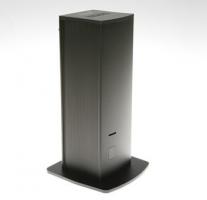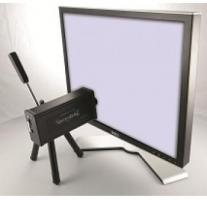Visual Stimulation / ViSaGe MKII Stimulus Generator
ViSaGe MKII Stimulus Generator

ViSaGe makes it simple to present calibrated visual stimuli on CRT, LCD, DLP and OLED based displays with precision timing, and provides a robust and reliable mechanism to synchronise the stimulus presentation with external data collection equipment, including button boxes or eye trackers, motion trackers, electrophysiological amplifiers, and MRI scanners. It is the ideal choice for cognitive, psychophysical, and neurophysiological investigations of vision and the brain.






Proven
Cambridge Research Systems was founded by Professor John Robson FRS and his son, Tom Robson, to design and manufacture equipment for vision scientists. We have now been been supplying Visual Stimulus Generators (VSGs) for 20 years, and previous VSGs in our range have been used in literally thousands of experimental systems, click through to the Publications page for details of a number of these.
Older VSGs were proprietary graphics cards, and originally had to be programmed at a relatively low level. The ViSaGe, which was first launched at the Vision Sciences Society meeting in 2004, consists of an internal framestore card plus a bench-top control unit (the black tower): it is more powerful than ever, and controlled using MATLAB interactive script language, a highly popular and easy to use tool for scientific and technical computing.
Compatible
The ViSaGe is easy to integrate into your existing laboratory setup. As well as multiple digital I/O lines for triggering and synchronisation, the ViSaGe provides high performance, buffered analog I/O for data acquisition synchronised to the video display.
The ViSaGe couples seamlessly with our range of products, to provide complete systems for many common vision science applications.Click through to the Package pages to find out how to combine ViSaGe with our other tools for vision science.
Precise
The ViSaGe is based on graphics hardware from an industry leader. Unlike most graphics systems that are designed for games playing, this chipset is also highly optimised for 2D drawing.
Accurate timing
Our proprietary real-time driver ensures accurate stimulus timing and accesses the hardware independently of Windows. This ensures that displays change exactly when you want them to: dropped and inserted frames are simply not an issue.
Precise luminance and chromaticity
14-bit video DACS and precision calibration devices mean that stimulus luminance and chromaticity characteristics are precisely defined in an enhanced dynamic range. This guarantees the best possible display quality from the stimulus monitor.
New release:
With the advent of computer systems using the new PCI Express bus technology, we have now released a new version of the ViSaGe system using PCI Express technology. The new system provides a new real-time driver to increase the performance of stimulus presentations and to provide access to enhanced graphics capability. The new system replaces the original AGP based ViSaGe.
Comments Steve Elliott, CRS Managing Director, “This new ViSaGe system recognizes the demise of AGP based computer systems in the market and their replacement by the new PCI Express PCs and also advances the performance available to our customers in developing new and more advanced experiments to further their science”.
Easy
The new CRS Toolbox adds the clarity of MATLAB to the power of the ViSaGe. Taking full advantage of MATLAB's power and simplicity, we have added many new features including support for: spectroradiometers and physiological colour spaces, new psychophysical methods, simplified random dot plotting and stereo displays. Application targeted demonstrations implement a wide range real experiments.
The ViSaGe, like all Cambridge Research Systems products, comes with lifetime free technical support. Our programmers, scientists and engineers are on-hand to help with everything from designing stimulus paradigms to programming problems.


